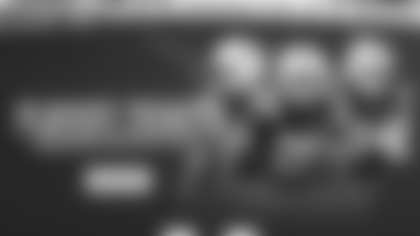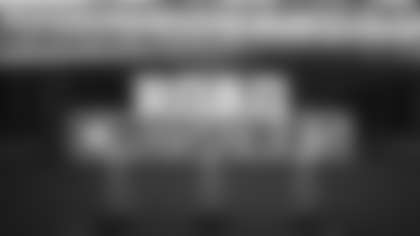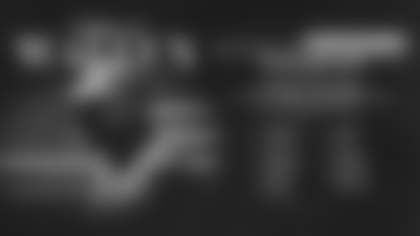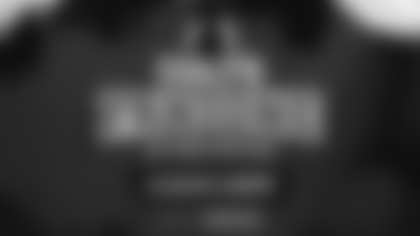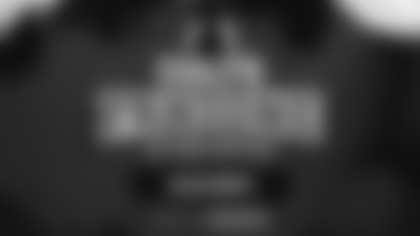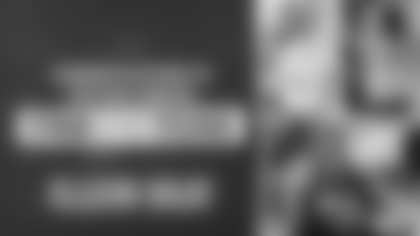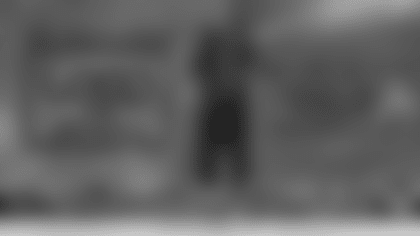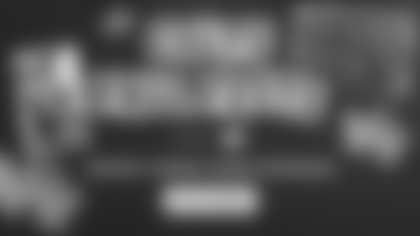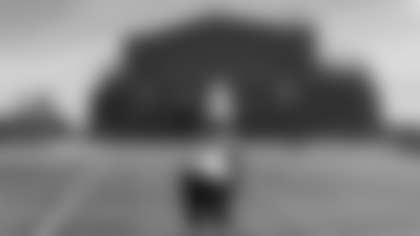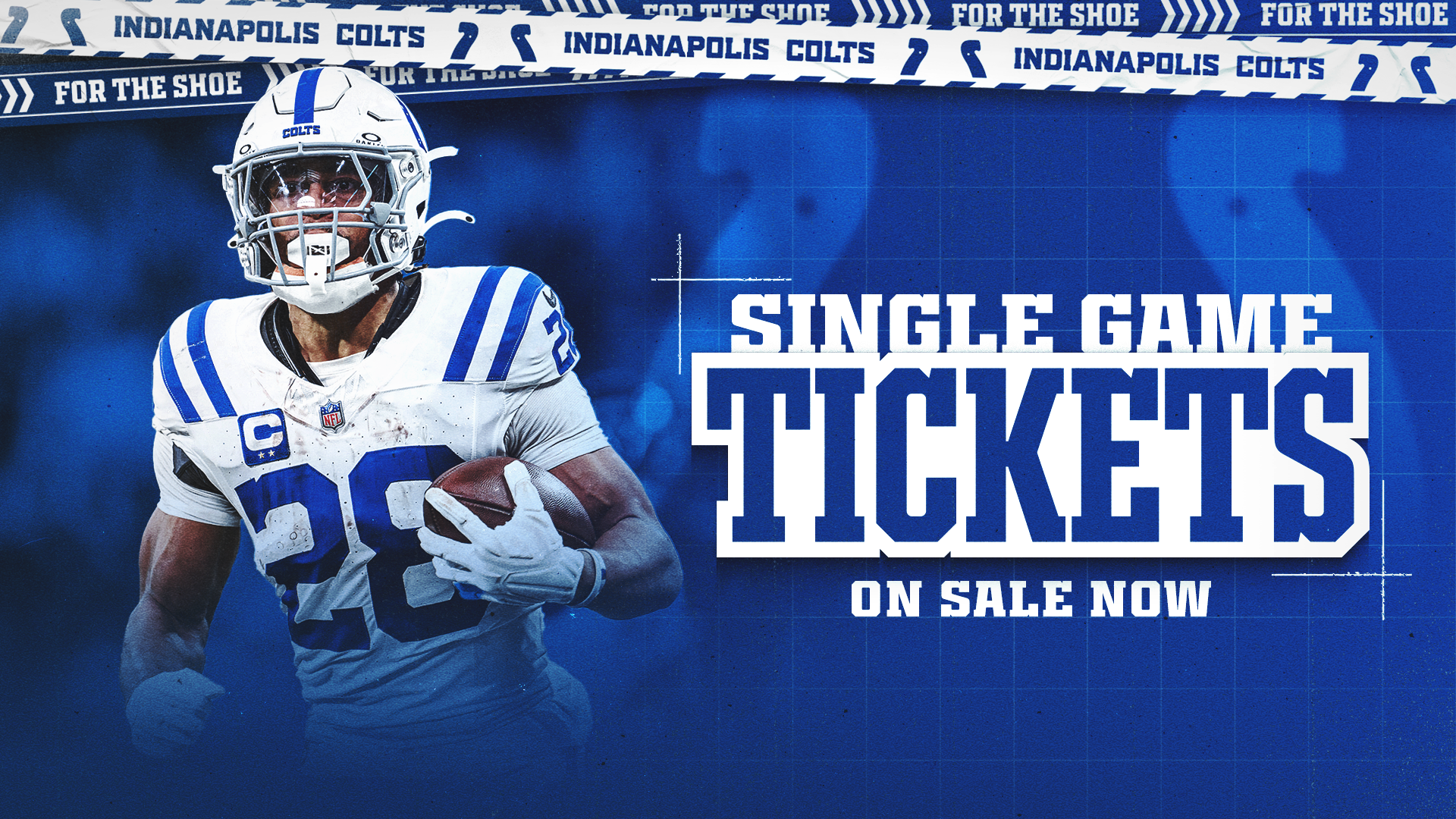Who Will Start the First Wave at Lucas Oil Stadium?
INDIANAPOLIS – There have been victories and big plays.
They have played with the roof open, and closed. They have played by day and night, but one thing has been missing thus far at the biggest building in downtown Indianapolis, the one with the multi-planed window on one end and big, glowing red letters on the side.
The wave.
That's right, the wave.
Since Ronald Reagan sat in the White House and Journey rocked the airwaves, the wave has fired-up fans and annoyed oppositions at big-time American sing events. It, too, was once part of the game-day experience at the RCA Dome. But in its six-game history, Lucas Oil Stadium – the new, state-of-the-art, retractable-roof facility in downtown Indianapolis – has been . . . has been . . .
Well, wave-less.
Just why might that be?
Some of the Colts' best minds have been wondering that recently, and more than that, they're hoping it will change. And they're hoping it changes sooner, not later.
"The wave has long been a part of professional sports," Colts Senior Vice President of Sales and Marketing Tom Zupancic said. "In the RCA Dome, the wave was utilized from time to time to fire the crowd up and to start an interactive process that ended up making the dome the loudest stadium in the National Football League."
Frank Zappa. Bill the Beerman.
The Seattle Seahawks. The University of Michigan.
The obscure and the prominent have had roles in the wave's three-decade history, a history whose prominent locales range from the West Coast to the Midwest, yet while Lucas Oil Stadium is a short Peyton Manning pass across the street from the old dome – the wave hasn't made the trip.
Emphasis on "yet."
"To date, no wave has occurred at Lucas Oil Stadium," Zupancic said this week as the Colts (5-4) prepared to play the Houston Texans (3-6) at Lucas Oil Stadium Sunday at 1 p.m.
"We wonder why, and we wonder if maybe Sunday will be the day."
Who will be the first Lucas Oil Stadium attendee to wave?
And will today be the day?
Those are the questions, and whoever is that first . . . well, waver . . . will join a long tradition that can be traced to the early 1980s, if not exactly with unerring accuracy.
But perhaps fans have forgotten how to wave, so first the wave must be defined.
If fans indeed have forgotten what it is to wave, they can do what the uninformed do in the internet age: turn to Wikipedia, which defines the wave as being "achieved in a packed stadium when successive groups of spectators briefly stand and raise their arms.
"Each spectator is required to rise at the same time as those straight in front and behind, and slightly after the person immediately to either the right (for a clockwise wave) or the left (for a counterclockwise wave). Immediately upon stretching to full height, the spectator returns to the usual seated position."
The effect is that "the wave of standing spectators travels semi-rapidly through the crowd, even though individual spectators never move away from their seats."
But that's technical, and the history of the wave – just who first brought the wave to prominence and who Sunday's first Lucas Oil Stadium "waver" will join in WaveLore – is a bit fuzzier.
The wave, according to Wikipedia, is of disputed origins, though few dispute that the wave as a craze began reaching a peak in the mid-1980s.
One theory is it was created by chance at an NHL game in Canada in 1980, then spread to a wider audience at a Major League Baseball game in Oakland, California and/or at an NFL game in Seattle, Washington.
And according to Wikipedia, the late Frank Zappa is credited by some with inventing a precursor to the wave in 1969 at the Denver Pop Festival in Denver Mile High Stadium when he assigned sounds and gestures to sections of the crowd and sequenced them with hand gestures.
There are those in Seattle, Wash., who believe that if the late Bill Scott – a.k.a., "Bill the Beerman" – didn't invent the wave, he at least was instrumental in bringing it to prominence while selling beer at Seahawks games in the old Seattle Kingdome in the early 1980s.
Still others believe it began at a playoff game between the Oakland A's and the New York Yankees in 1981 at the urging of professional cheerleader Krazy George Henderson.
Other theories trace the origin of the wave to the University of Washington in the early 1980s, and few doubt that the University of Michigan remains one of the major wave sites. Wikipedia also credits Wisconsin with keeping the tradition strong.
But no matter its origins, and no matter what schools deserve credit for keeping the wave alive, no one refutes the wave's absence to date in the stadium where the Colts now play.
Yet, Colts officials have faith that the absence will end soon.
"The wave is not gone," Colts Senior Vice President Pete Ward said confidently this week. "It's just been getting its bearings."
Who will be the first Lucas Oil Stadium attendee to wave?
And will today be the day?
Those are the questions . . .
NOTE: While fans are encouraged to wave, they are also asked to do so only when the Colts are on defense.



